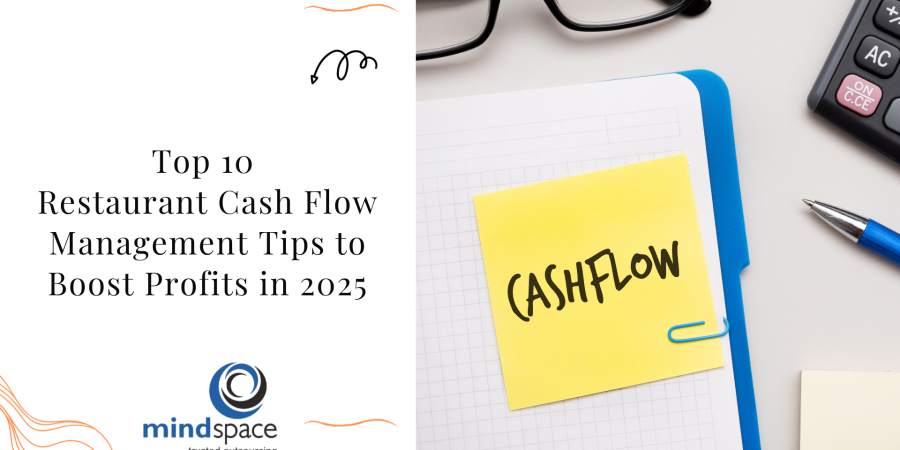Top 10 Restaurant Cash Flow Management Tips to Boost Profits in 2025
Running a successful restaurant is a balancing act—managing inventory, staffing, reservations, vendor terms, and customer experience. But one crucial ingredient determines whether your business thrives or just survives: cash flow management.
Even profitable restaurants can falter if they fail to manage their cash effectively. Here’s a streamlined, actionable guide to help you optimize your restaurant’s cash flow, save time, reduce stress, and maintain a financially healthy operation.
1. Map Your Cash Flow: Track Every In & Out
Whether you’re operating a local restaurant, cafe, or bar & grill, cash flow is king. Focus on not just profit, but liquidity—the actual cash available to run daily operations.
Inbound cash sources include dine-in sales, takeout, delivery commissions, catering revenue, and loyalty programs.
Outgoing costs typically cover food costs, payroll, rent, utilities, marketing, licensing, software subscriptions, and loan repayments.
Run a weekly cash flow report using tools like QuickBooks, Xero, or MarginEdge—or simply track it in a user-friendly spreadsheet.
2. Use Menu Engineering (80/20 Rule) to Drive Revenue
Identifying that 20% of dishes generate 80% of profits can transform your menu strategy. Highlight high-margin, best-selling items through signage or suggestions, and remove or revise low-performing, high-cost dishes.
Gradually renegotiate supplier rates for those profitable items to increase margins without raising prices.
3. Trim Inventory & Waste with Lean Practices
Overstocking ties up cash and leads to spoilage. Use a just-in-time inventory system, ordering in smaller, frequent batches.
Optimize using apps like MarketMan, SimpleOrder, or BlueCart, offering real-time tracking and minimizing waste—helping you reduce cost and cash tied up in inventory.
4. Control Labor Costs Strategically
Labor is often the second-largest expense after food costs. Use POS data or forecasting tools to schedule staff based on actual demand. Aim for a labor-to-revenue ratio of 25%–30% where possible.
Cross-train employees so you can right-size staffing during slow periods without compromising service quality.
5. Accelerate Accounts Receivable & Payments
For catering, events, or B2B contracts, slow payments can block your cash flow. Enforce payment terms like Net 7 or Net 14 instead of Net 30, and incentivize early payments with small discounts (e.g., 2% if paid within 5 days).
Use automated invoicing tools with built-in reminders to speed things up—and keep your working capital flowing.
6. Renegotiate Supplier Terms to Free Up Cash
Leverage consistent orders and timely payments to negotiate better terms—bulk discounts, extended payment cycles, or rebates. Even a 5% saving on key supplier costs can add up substantially over time.
7. Shift More Orders to Direct Channels
Third-party delivery services like Uber Eats or DoorDash may expand reach, but they can charge 20%–30% commissions, eating into profits.
Promote direct online orders on your website with perks like free delivery or loyalty rewards. Use QR codes to redirect customers—either via in-house drivers or direct delivery partners—to keep margins healthy and boost cash flow.
8. Streamline with Integrated Technology
Automating your key operations saves time and reduces errors. Consider:
-
Toast or Square for POS
-
Deputy or 7shifts for scheduling
-
Xero, QuickBooks for bookkeeping
-
Plastiq or Restaurant365 for invoice automation
These tools sync operations, support decision-making, and increase financial visibility and efficiency.
9. Budget Seasonally to Build Resilience
Seasonal sales swings are common. Build up a cash reserve during peak periods, pre-order discounted stock for busy seasons, and scale back unnecessary expenses in slower months.
This steady approach ensures you can weather downturns without disruption.
10. Get Financial Support When Needed
Don’t wait until a crisis hits. Hire a bookkeeper or virtual CFO to generate monthly cash flow forecasts, or explore short-term capital loans, industry-specific financing, or tax relief.
Financial insight isn’t a luxury—it’s a survival strategy.
Final Thoughts: Don’t Let Cash Slip Through the Cracks
As the face of your restaurant, you’re the chef, leader, and increasingly, financial navigator. Managing cash flow doesn’t have to be time-consuming or complex. Start small—apply just a few of the tips above, then gradually expand your cash management habits.
Goal: lower stress, better stability, and a restaurant that thrives, not just survives.


